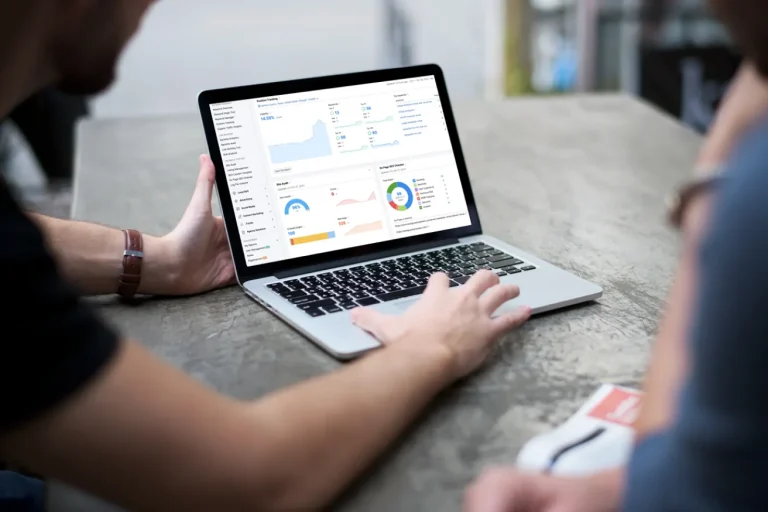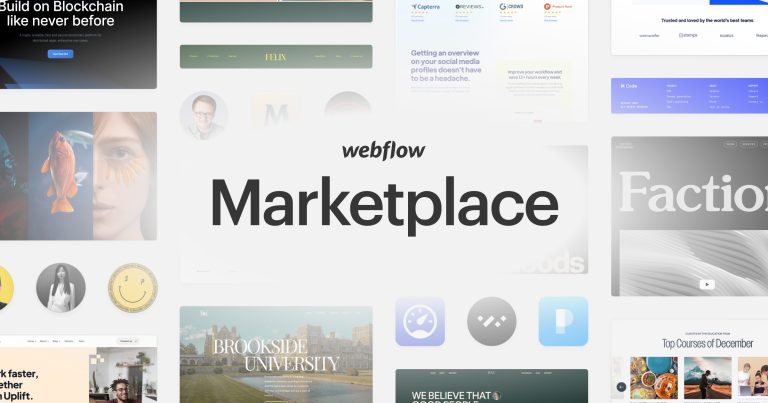How Price Lining Attracts Your Ideal Customer

Imagine walking into a store, eager to buy a new jacket. But instead of clear choices, you’re bombarded with rows of similar styles, each sporting slightly different price tags. Confusion sets in – what’s the difference? Why the price jump? This, my friend, is where price lining comes to the rescue.
But price lining is more than just a pricing strategy. It’s a strategic marketing weapon designed to do one key thing: unlock your ideal customer. Forget the days of simply labeling products “good” or “better.” Price lining creates a tiered system, catering to a wider audience. The budget-conscious shopper finds a quality option at a comfortable price. The premium buyer gets top-of-the-line features they crave. The result? Increased sales, a stronger brand image, and a loyal customer base who feels understood and valued. Ready to transform confusion into customer connections? Dive deeper and discover the power of price lining!
Have you ever noticed a store offering seemingly similar products at distinct price points? Perhaps a range of headphones with varying features, each carrying a specific price tag? That’s price lining in action!
What is Price Lining?

In essence, price lining is a marketing strategy where businesses intentionally offer similar products or services at different price points. This caters to a wider audience by:
- Targeting different customer segments: Price lining recognizes that customers have diverse needs and budgets. By offering a range of options, businesses can attract both value-conscious shoppers and those seeking premium features.
- Creating a tiered product/service structure: Imagine a pyramid. Price lining often creates a tiered system, like “good,” “better,” and “best.” Each tier offers a specific level of features and benefits at a corresponding price point, making it easier for customers to find the product or service that aligns perfectly with their needs and budget.
How Price Lining Works: The Art of Strategic Tiers
Price lining isn’t just about slapping different price tags on similar products. It’s a calculated dance between cost considerations, competitor analysis, and creating a clear value proposition for each tier. Here’s a breakdown of the key steps involved:
1. Setting Price Tiers:
- Cost Considerations: It all starts with understanding your production costs and profit margins. Businesses need to analyze the manufacturing costs, materials, and labor involved in each product or service variation. This sets the foundation for establishing profitable price points across the tiers.
- Competitor Analysis: Knowing your competition is crucial. Businesses should research the pricing strategies of similar companies, identifying any gaps or opportunities in the market. This helps them position their own price tiers competitively.
- Establishing Price Gaps: Simply offering variations at slightly different prices won’t do. Price lining uses strategic price gaps between tiers. These gaps should be large enough to be noticeable but not so big that they discourage customers from considering the higher-priced options.
2. Product/Service Differentiation Within Tiers:
Once the price tiers are established, the next step is ensuring a clear distinction between them. This involves:
- Features and Benefits: Each tier should offer a distinct set of features and benefits. The “good” tier might provide basic functionality, while the “better” tier adds more advanced features, and the “best” tier boasts premium features and top-of-the-line quality.
- Perceived Value: The key is to ensure customers perceive a clear value difference between tiers. This can be achieved through factors like materials used, design aesthetics, packaging, and even warranty lengths. Each tier should feel like a distinct product offering, justifying its price point.
By carefully considering these steps, businesses can create a price lining strategy that effectively caters to different customer segments while maintaining a healthy profit margin.
The Power Play: Unveiling the Benefits of Price Lining

Price lining isn’t just a fancy marketing term; it’s a strategic tool with the potential to supercharge your business. Here’s a closer look at the key benefits it offers:
1. Increased Sales and Revenue:
- Expanded Customer Reach: By offering a range of price points, businesses can attract a much wider customer base. Budget-conscious shoppers have options within their reach, while those seeking premium features aren’t left wanting. This broader appeal translates to increased sales and revenue potential.
- Inventory Management: Price lining allows businesses to cater to different demand levels. Lower-priced items might sell faster, while higher-priced options might have a smaller, but more profitable, customer base. This helps with inventory management, ensuring businesses have the right products in stock to meet customer needs.
2. Enhanced Brand Perception:
- Catering to Diverse Needs: Price lining shows customers that you understand their needs and budgets. You’re not offering a one-size-fits-all solution, but rather a selection that caters to their specific preferences. This builds brand loyalty and fosters a perception of being a customer-centric company.
- Premium Image: By offering higher-priced tiers with exceptional features and quality, businesses can cultivate a premium image. This attracts customers who value top-of-the-line offerings and strengthens the overall brand perception.
3. Streamlined Operations and Profitability:
- Cost Control and Efficiency: Price lining often involves creating variations of the same product using shared components. This can lead to cost efficiencies in production and inventory management.
- Profit Margin Optimization: By strategically setting price points and ensuring a clear value difference between tiers, businesses can optimize their profit margins. Lower-priced options generate profit, while higher-priced options potentially boast even higher margins due to the perceived value proposition.
Overall, price lining can be a powerful tool for businesses to not only increase sales but also strengthen their brand image and optimize their operations for long-term profitability.
The Tightrope Walk: Navigating the Challenges of Price Lining

While price lining offers significant pros, it’s not without its challenges. Here are some key obstacles businesses need to be aware of:
1. Cannibalization:
This occurs when customers opt for a lower-priced option within the product line, potentially sacrificing some features, instead of purchasing a higher-priced option with more features. This can lead to lost sales of higher-margin products.
2. Cost-Effectiveness:
Finding the sweet spot between offering attractive price points and maintaining profitability can be tricky. Businesses need to carefully consider production costs at each tier to ensure sufficient profit margins across the board.
3. Perception Management:
The key to successful price lining lies in ensuring customers perceive a clear value difference between tiers. If the perceived value isn’t clear, customers might feel frustrated or confused, potentially leading to lost sales or brand dissatisfaction.
4. Channel Conflict:
If businesses sell through multiple channels, like retailers or online marketplaces, price lining can lead to channel conflict. Retailers might feel their pricing autonomy is limited, potentially impacting their profit margins or willingness to promote the products effectively.
5. Competitive Pressures:
In a dynamic market, competitors might adjust their pricing strategies in response to a company’s price lining approach. Businesses need to be prepared to adapt and continuously monitor the competitive landscape.
By acknowledging these challenges and implementing well-defined strategies to address them, businesses can navigate the tightrope walk of price lining and reap the substantial benefits it offers.
Price Lining in Action: Everyday Examples
Price lining isn’t just a theoretical concept; it’s a strategy employed by countless businesses across various industries. Here are some real-world examples to illustrate how it works:
1. Retail Clothing Stores:
Walk into any clothing store and you’ll likely see price lining in action. There might be a section with basic t-shirts at a budget-friendly price point, another section with trendy mid-range clothing, and perhaps a high-end designer section with premium materials and exclusive styles.
2. Smartphone Manufacturers:
Major smartphone manufacturers often release multiple models of the same phone with varying features and price points. A flagship phone might boast the latest technology and top-of-the-line camera, while a budget model might prioritize core functionality at a more affordable price.
3. Fast Food Restaurants:
Fast food chains are masters of price lining. They offer value menus with budget-conscious options, alongside regular menus with a wider selection of items at slightly higher prices. This caters to customers seeking a quick and affordable meal as well as those willing to spend a little more for variety.
4. Software Subscriptions:
Software companies often offer tiered subscription plans. A basic plan might provide core functionality, while a mid-tier plan adds more features, and a premium plan unlocks all features with advanced capabilities. This caters to individual users and businesses with varying needs and budgets.
These are just a few examples, and price lining can be found in countless other industries, from car dealerships offering basic, mid-range, and luxury models to airlines with economy, business class, and first-class options. By understanding how price lining works and its real-world applications, businesses can leverage this powerful strategy to reach new customers, optimize sales, and build a strong brand presence.
Mastering the Art: Effective Price Lining Strategies

Price lining isn’t a one-size-fits-all approach. To maximize its effectiveness, businesses need to implement well-defined strategies. Here are some key steps to consider:
1. Conduct Thorough Market Research:
- Understanding Your Audience: The foundation of successful price lining lies in a deep understanding of your target market. Conduct thorough market research to identify your ideal customer segments, their needs, budgets, and purchasing behaviors.
- Competitive Analysis: Don’t operate in a vacuum. Analyze your competitors’ pricing strategies and product offerings. This will help you identify gaps in the market and position your own price tiers competitively.
2. Focus on Clear Value Propositions:
- Defining the Value Gap: Once you understand your audience and competitors, clearly define the value proposition for each price tier. What features and benefits will each tier offer? How will the customer experience differ at each level?
- Communication is Key: Don’t leave your customers guessing! Clearly communicate the value proposition for each tier through marketing materials, product packaging, and even in-store signage. This ensures customers understand the rationale behind the price points and can make informed purchasing decisions.
3. Maintain Consistent Branding Across Price Points:
- Brand Identity Matters: Price lining doesn’t mean compromising your brand identity. While features and quality might differ across tiers, the overall brand experience should remain consistent. This fosters trust and loyalty with your customers, regardless of the price point they choose.
- Maintaining Quality: Even at lower price points, ensure a baseline level of quality that reflects your brand values. This doesn’t mean every tier needs the top-of-the-line materials, but it does mean maintaining a commitment to functionality and customer satisfaction.
4. Monitor and Adapt:
- The Market is Dynamic: Price lining isn’t a static strategy. Regularly monitor customer preferences, competitor actions, and market trends. Be prepared to adapt your price tiers or value propositions if necessary to ensure your strategy remains effective in the ever-evolving marketplace.
- Embrace Data-Driven Decisions: Data is your friend! Utilize sales data, customer feedback, and market research insights to inform your price lining strategy. By analyzing data, you can identify which tiers are performing well and adjust your approach accordingly.
By implementing these effective strategies, businesses can transform price lining from a basic pricing tactic into a powerful tool for customer acquisition, brand building, and long-term profitability.
Conclusion
Feeling lost in the labyrinth of price lining? Don’t worry, ONextStudio’s marketing design team is here to be your Ariadne! We’ll craft a winning strategy that unlocks hidden customer segments and sends your sales soaring.
Imagine this: a clear value proposition for each tier, meticulously crafted through data analysis and market research. Your target audience instantly understands the “why” behind your pricing, eliminating confusion and driving informed purchasing decisions.
Stop seeing price lining as a complex puzzle and start seeing it as a strategic advantage. Let ONextDigital’s marketing design expertise transform your pricing strategy from a headache into a powerful tool for customer acquisition and brand loyalty. Partner with us and unlock the full potential of price lining!




